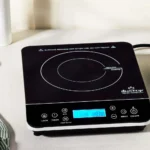
Close-up Of A Woman's Hand Inserting Hearing Aid In Her Ear
The first hearing aids were developed in the 17th century and consisted of ear trumpets made of animal horns or shells. These ear trumpets were large and bulky, and their effectiveness was limited. Despite their limitations, ear trumpets remained the primary hearing aid technology for nearly three centuries until the advent of electric hearing aids.
The first electric hearing aid was invented in 1898 by Miller Reese Hutchison. This hearing aid used a carbon transmitter to amplify sound and was significantly more effective than previous hearing aids. Electric hearing aids continued to improve in the 20th century, with the introduction of vacuum tube and transistor hearing aids.
By 1910, carbon hearing aids were developed and were smaller and more powerful than their predecessors. These hearing aids used a carbon button microphone to amplify sound, which was an improvement over earlier designs. Carbon hearing aids remained popular until the 1940s when vacuum tube hearing aids became the dominant technology.
In the 1920s, vacuum tube hearing aids were developed, which provided better amplification. These hearing aids used a vacuum tube amplifier to boost sound, and were more effective than carbon hearing aids. However, vacuum tube hearing aids were large and required a separate battery pack, which made them cumbersome to use.
The first transistor hearing aid was developed in 1952. This hearing aid used a transistor amplifier, which was much smaller and more reliable than vacuum tube amplifiers. Transistor hearing aids quickly became the dominant technology in the 1950s and 1960s.
In 1972, the first digital hearing aid was developed. This hearing aid used digital signal processing to provide improved sound quality and customization. Digital hearing aids have continued to evolve, and now offer a range of features such as directional microphones, noise reduction, and wireless connectivity.
In 1983, the first in-the-ear hearing aid was developed. This hearing aid was smaller and more discreet than behind-the-ear hearing aids, which made it more appealing to users. In-the-ear hearing aids have continued to improve in size and functionality, and now include completely-in-the-canal and invisible-in-the-canal designs.
In 1996, the first completely-in-the-canal hearing aid was developed. This hearing aid was small enough to fit entirely inside the ear canal, making it nearly invisible. Completely-in-the-canal hearing aids remain popular today, although they may not be suitable for all types of hearing loss.
There are approximately 466 million people worldwide with disabling hearing loss. Disabling hearing loss is defined as a hearing loss greater than 40 decibels in the better hearing ear. The prevalence of disabling hearing loss increases with age and is more common in low- and middle-income countries.
Hearing aids can improve communication and quality of life for people with hearing loss. Hearing aids can help people hear sounds they were missing, which can lead to improved social interactions, work performance, and emotional well-being. However, the effectiveness of hearing aids depends on a variety of factors, including the severity of hearing loss and the individual’s hearing needs.
The cost of hearing aids can range from a few hundred to several thousand dollars. The cost of hearing aids varies depending on factors such as the technology, features, and style of the hearing aid. While some insurance plans may cover the cost of hearing aids, many people must pay out of pocket.
Hearing aids are typically not covered by insurance. While some insurance plans may cover the cost of hearing aids, many plans do not. This can make hearing aids inaccessible to people who cannot afford to pay out of pocket.
Hearing aids can be programmed to match the individual’s specific hearing needs. Hearing aid programming involves adjusting the amplifier settings to match the individual’s hearing loss and preferences. Hearing aid programming can be done by an audiologist or hearing instrument specialist, who will use a series of tests and measurements to determine the best settings for the individual.
Hearing aids require regular maintenance and cleaning to ensure they function properly. Earwax and debris can accumulate in the hearing aid, which can affect its performance. Regular cleaning and maintenance can help prolong the life of the hearing aid and ensure it continues to function properly.
Some hearing aids are equipped with wireless connectivity, which allows them to connect to other devices such as smartphones, TVs, and computers. This feature can be especially useful for people with hearing loss who need to hear sound from these devices more clearly.
Hearing aids can be powered by disposable batteries or rechargeable batteries. Disposable batteries are easy to replace, but can be costly over time. Rechargeable batteries can be more convenient and cost-effective, but may require more maintenance.
In some cases, hearing aids may not be suitable for people with severe or profound hearing loss. Cochlear implants may be a more effective option for these individuals. Cochlear implants are surgically implanted devices that bypass the damaged part of the ear and directly stimulate the auditory nerve.
Hearing aid technology continues to evolve, with new features and improvements being introduced regularly. Some of the latest developments in hearing aid technology include machine learning, which can automatically adjust the hearing aid settings based on the user’s environment, and artificial intelligence, which can analyze and interpret speech in real time.
Hearing aids can provide significant benefits to people with hearing loss, but they are not a cure. Hearing aids can improve hearing and communication, but they do not restore hearing to normal levels. Additionally, some people may experience challenges adjusting to hearing aids or may not find them effective.
Hearing aids can be customized to fit the individual’s style preferences. There are a variety of styles and colors available, ranging from traditional behind-the-ear models to sleek, modern designs. Some hearing aids can even be personalized with custom artwork or designs.
The average lifespan of a hearing aid is approximately 3-7 years. The lifespan of a hearing aid depends on factors such as the quality of the hearing aid, the frequency of use, and the level of maintenance and care. Regular checkups with an audiologist or hearing instrument specialist can help prolong the life of the hearing aid.
Hearing aids can be an important part of a comprehensive treatment plan for people with hearing loss. Other treatment options may include assistive listening devices, speech therapy, and cochlear implants. The best treatment approach will depend on the individual’s specific needs and preferences.
Some people may be hesitant to try hearing aids due to concerns about stigma or embarrassment. However, hearing aids are a common and accepted treatment option for people with hearing loss. Many people who use hearing aids report feeling more confident and empowered in social situations.
Hearing loss can have a significant impact on mental health and well-being. People with hearing loss are more likely to experience depression, anxiety, and social isolation. Treatment with hearing aids can help improve these outcomes and lead to a better quality of life.
Advances in hearing aid technology and accessibility have made hearing aids more widely available to people with hearing loss. However, there is still a significant unmet need for hearing aids in many parts of the world, particularly in low- and middle-income countries. Efforts to increase access to hearing aids and hearing healthcare services are critical for improving the lives of people with hearing loss worldwide.









